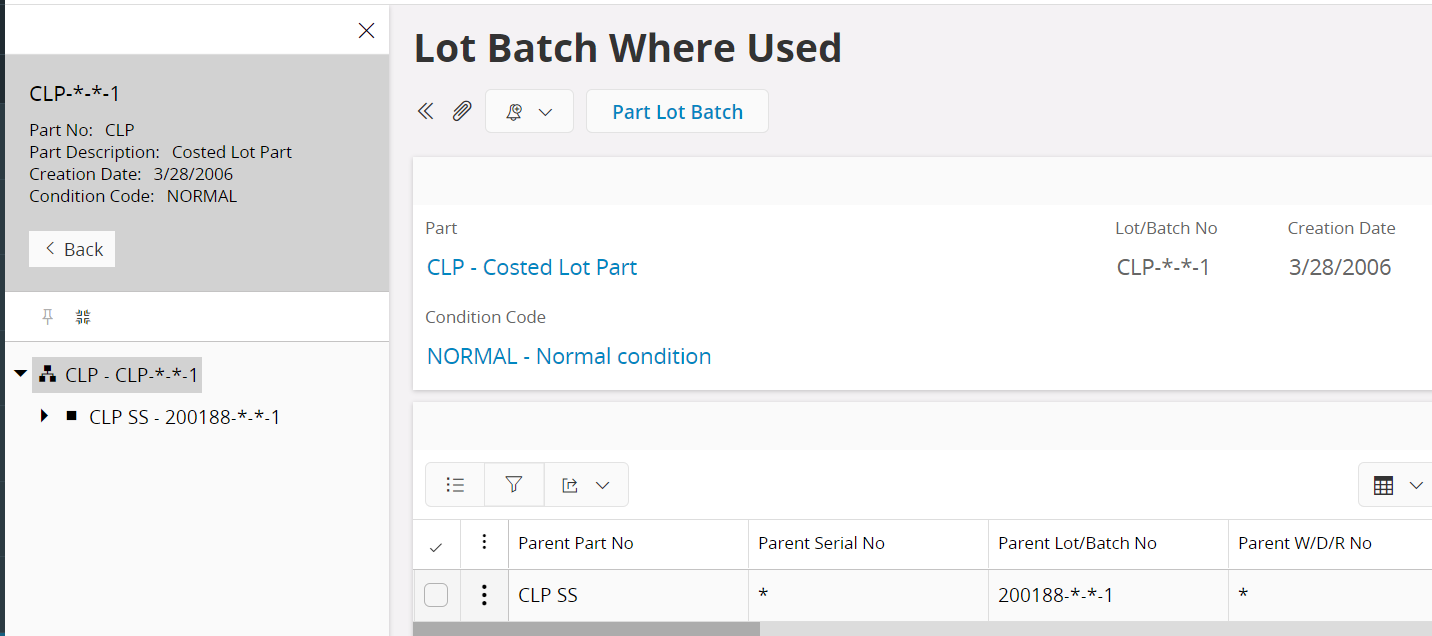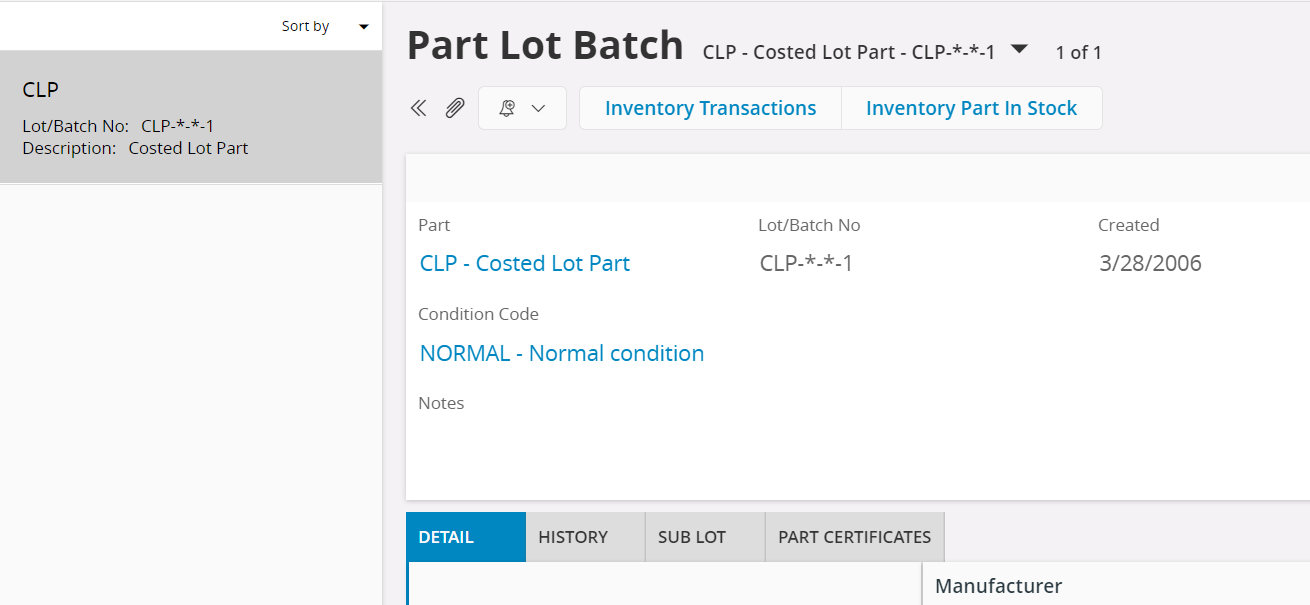Hi
In a scenario where we are purchasing lot/batch controlled parts for our manufacturing processes we want to have a high-level report per lot/batch.
The report needs to provide an overview of a given lot/batch or several lot/batches for customs authorities.
In essence the report must tell what quantity of the lot/batch do we have
- in inventory
- in inventory as a component in a manufactured part (at any level of the structure of the manufactured part in inventory)
- in WIP (that is when 1. the lot/batch itself or 2. a part containing the lot/batch as a component is issued to a Shop Order where the product is not yet finished)
- Issued to customer through Customer Order or Project
I’m aware of the lot-batch master but finds that this provides a way to find the non-aggregated details.
Hope someone can help.
BR Kristian






